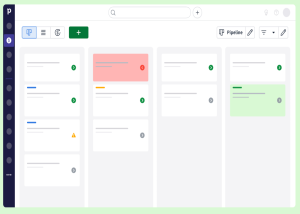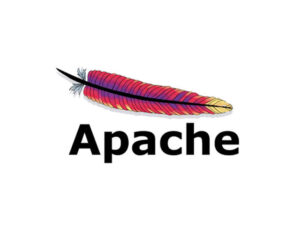Going from surviving to thriving will be next year’s key trend for the enterprise with businesses moving past the pandemic.
” data-credit=”Image: Deloitte” rel=”noopener noreferrer nofollow”>
In the 2021 Deloitte Global Human Capital Trends survey, the company recommends making employee well-being a central priority instead of a sideline issue.
Image: Deloitte
Business leaders should take the lessons learned during the pandemic to re-architect work and make employee well-being central instead of secondary, according to a new report from Deloitte. The 2021 Deloitte Global Human Capital Trends report explains what forces are shaping workforce development and the responsibilities of the human resources department.
Deloitte identified five human capital trends in its survey of 3,600 executives in 96 countries:
- Design work for well-being
- Unleash worker potential
- Build superteams
- Set new directions for work and the workforce
- Re-architect work
Many of these trends emerged from the business and personal demands imposed by the COVID-19 pandemic. In the new year as lockdowns ease and more people get vaccinated, business and tech leaders should learn from the experience and shift from surviving to thriving.
SEE: COVID-19 workplace policy (TechRepublic Premium)
The report contrasts the difference between the two states for each trend.
For example in the first trend about worker well-being, companies in survival mode will support physical and mental health through programs that are adjacent to work. Companies that are thriving will integrate well-being into work through thoughtful work design, according to the report.
The survey found that companies are learning to live with uncertainty, despite hopes for a return to pre-COVID-19 normal. The survey asked leaders about how the pandemic has changed their approach to preparedness. The most popular answer before the pandemic was, “focus on likely, incremental events.” Now the most popular answer is “focus on multiple scenarios.” Forty-seven percent of survey respondents chose that response for their 2021 plan, compared with only 23% who chose that approach pre-COVID.
Here’s Deloitte’s advice on how to incorporate these trends into 2021 workforce planning and to shift from surviving to thriving.
Design work for well-being
Instead of expecting employees to fit personal lives around work, employers should change the workplace to support overall wellbeing. The 2021 report finds that “organizations that integrate well-being into the design of work at the individual, team, and organizational levels will build a sustainable future where workers can feel and perform at their best.”
Deloitte shares an example of this approach from Daimler AG. The company offers an optional email functionality called “Mail on Holiday” that employees can use when they are out of the office. The service automatically deletes incoming messages while people are away. The system sends auto replies that suggest alternative people to contact or to remind the sender to get back in touch when the worker returns.
It’s important also to make this shift on all three levels: Individual, team, and organization. Leaders should incorporate this change into cultural, relational, operational, physical, and virtual environments.
Unleash worker potential
The challenge with this trend is to move away from the traditional approach to skills development and job descriptions. The new best practice is to give workers more freedom to choose how they can best take on critical business problems. Deloitte identifies “talent marketplaces” as one way to do this:
“These marketplaces are platforms that make visible and communicate to workers defined opportunities for professional development, training, mentorship, project participation, networking, promotion, diversity, and inclusion. They’re designed to provide workers with choice by helping them match their interests, passions, and capabilities against current and future business and project demands. Such ‘passion projects’ give workers new development experiences and opportunities to learn in the flow of work, further enhancing the skills they bring to the organization.”
Build superteams with AI as a co-worker
Superteams are the key to being nimble enough to respond to business challenges, according to the report. Deloitte describes this new kind of team as a combination of people and technology that uses the strengths of both to pursue outcomes at a speed and scale not otherwise possible.
The barrier to adopting this is the tendency to view artificial intelligence (AI) as a tool rather than a team member. Deloitte recommends taking a broader view of technology’s transformative potential to elevate the impact it can have on work.
Set new directions for work and people
To operate in a fast-changing and uncertain world, companies need to be able to quickly pivot and set new directions, and the key to doing that, according to the Deloitte survey, is to understand the workforce’s capabilities and preferences. Capturing this information has been a challenge for several years. Deloitte recommends asking these questions to get an idea of what a company workforce is capable of accomplishing.
To capitalize on worker potential, leaders should ask these questions:
- How often are jobs changing and to what degree?
- How ready is our workforce to perform the work of the future?
- Are workers and leaders able to quickly and effectively adapt to constant change?
- What new trends, challenges, and scenarios are leaders being prepared for?
To tap into the entire talent ecosystem, Deloitte recommends finding answers to these questions:
- How many workers provide direct or indirect services to the organization?
- How healthy is our internal talent market?
- How much capability can we access across our broader ecosystem?
- Which of our workers are at risk of leaving and why?
Finally, the report recommends that leaders who want to translate values into action ask these questions:
- How does our organization treat its employees, contractors, and service providers of every type?
- Are workers from diverse communities in a position to wield influence in the company?
- How is our culture, workforce, and leadership being portrayed externally?
- What signals are we seeing that point to outliers in worker behaviors and norms?
A memo to HR: Re-architect work
In describing this trend, the Deloitte authors note that HR’s handling of challenges created by COVID-19 has made business leaders more confident in HR’s ability to help organizations navigate future changes. This most recent survey showed that HR leaders have more confidence in this ability as well.
At the same time, the survey found that HR’s highest areas of impact during the pandemic were some of the department’s traditional responsibilities, such as protecting health and safety, promoting well-being, and increasing communications. The 2021 challenge for HR leaders is to figure out how to take advantage of this new status to define the next phase. The goal is to expand HR’s focus beyond operational tasks to re-architect work as a whole, according to the report. The authors state that when HR has this mindset, organizations are more resilient, workers are more empowered, and companies achieve better results.
To make this shift, Deloitte recommends using these tactics:
- Shift the focus from outputs to outcomes
- Consider re-architecting as an ongoing capability
- Expand the idea of capabilities to include humans and AI
- Approach workforce development by focusing on human abilities such as analysis and synthesis, problem-solving, and social intelligence.
Also see
Source of Article




